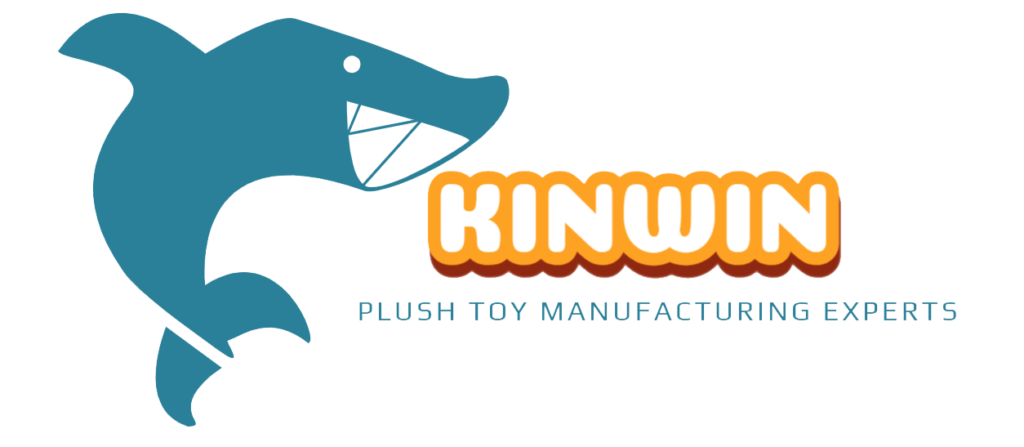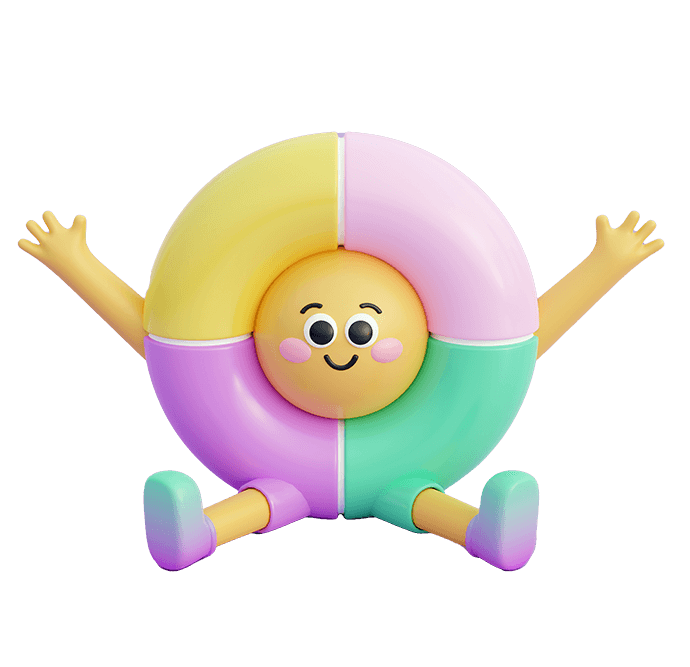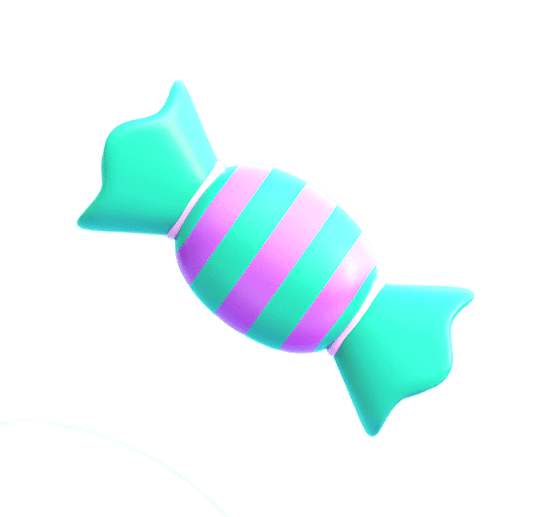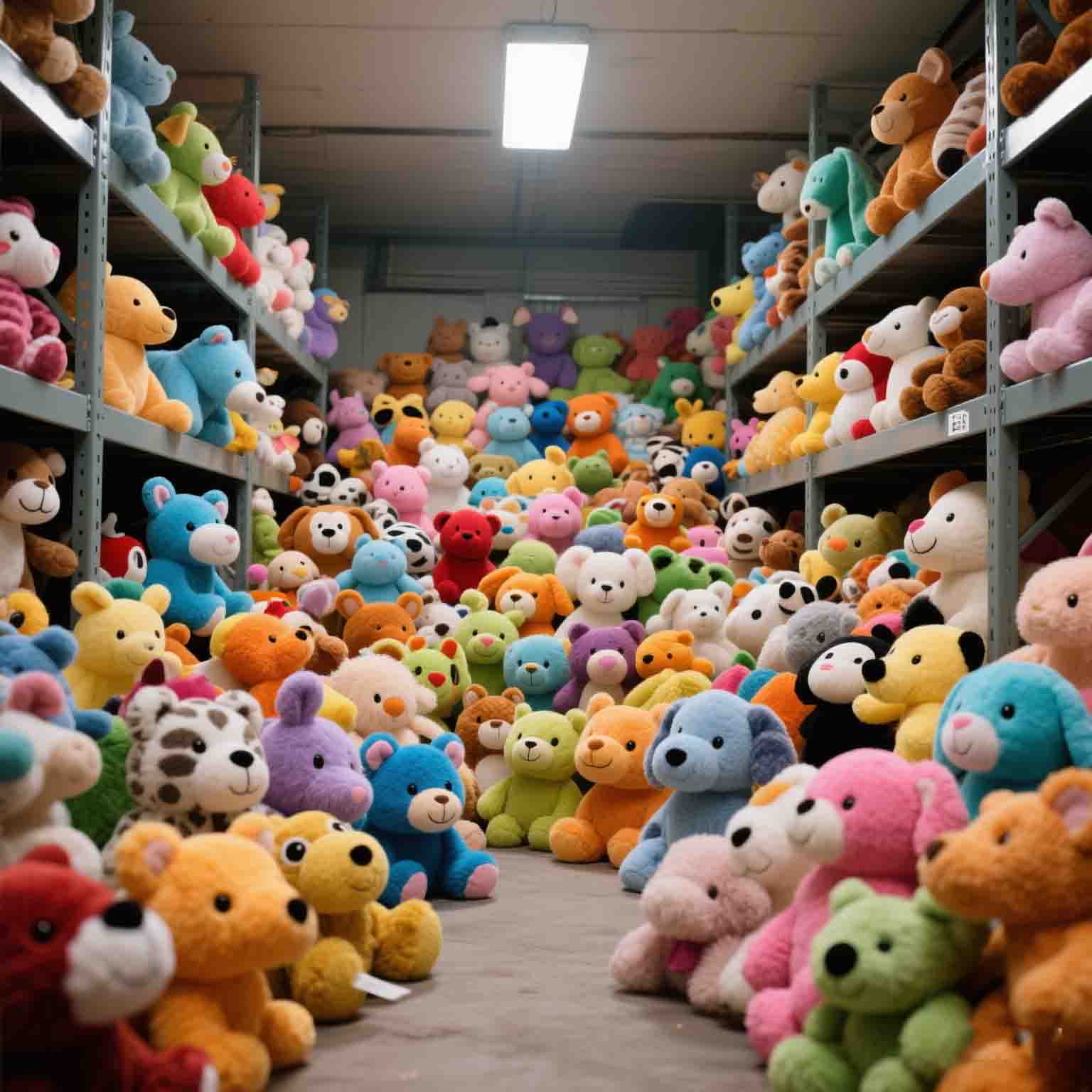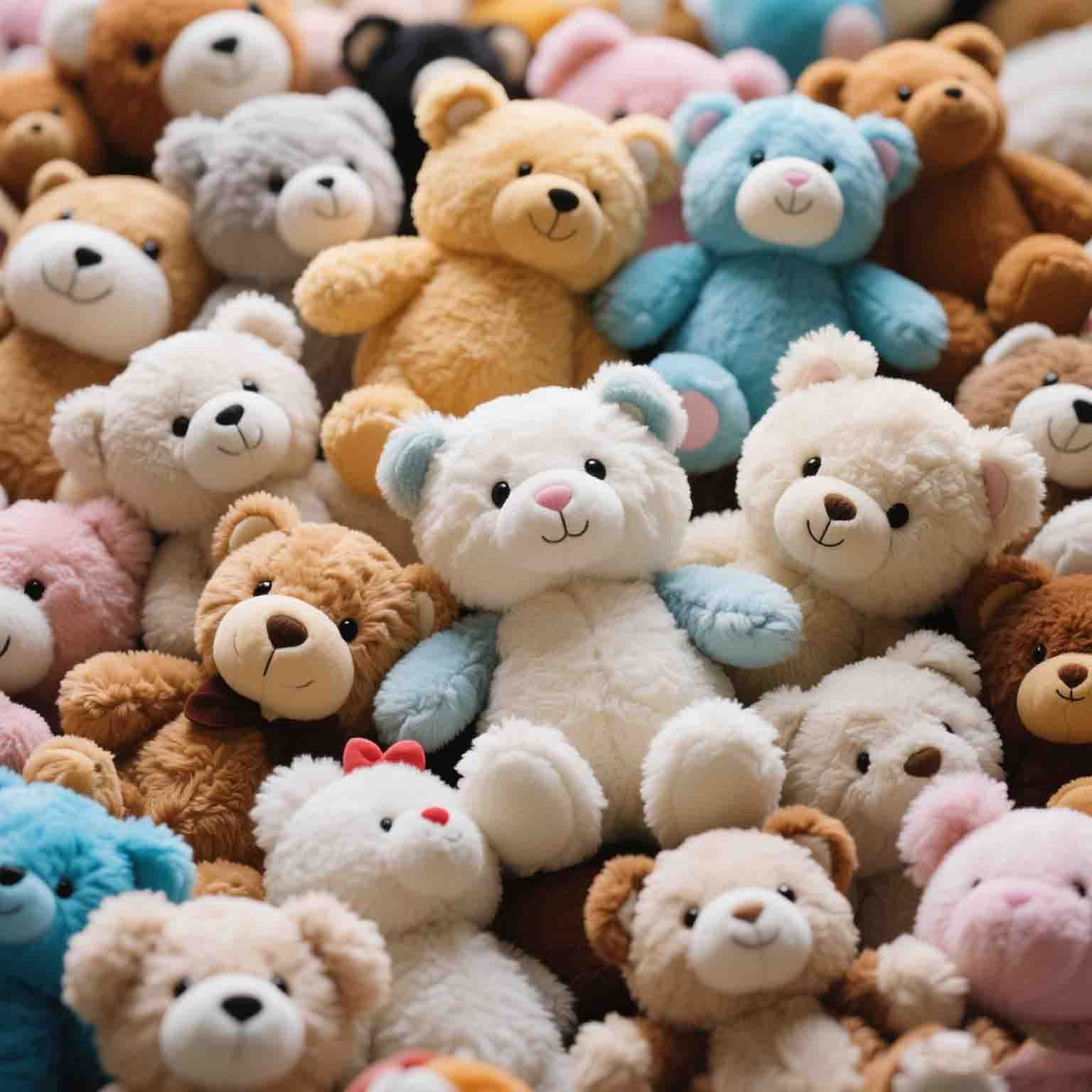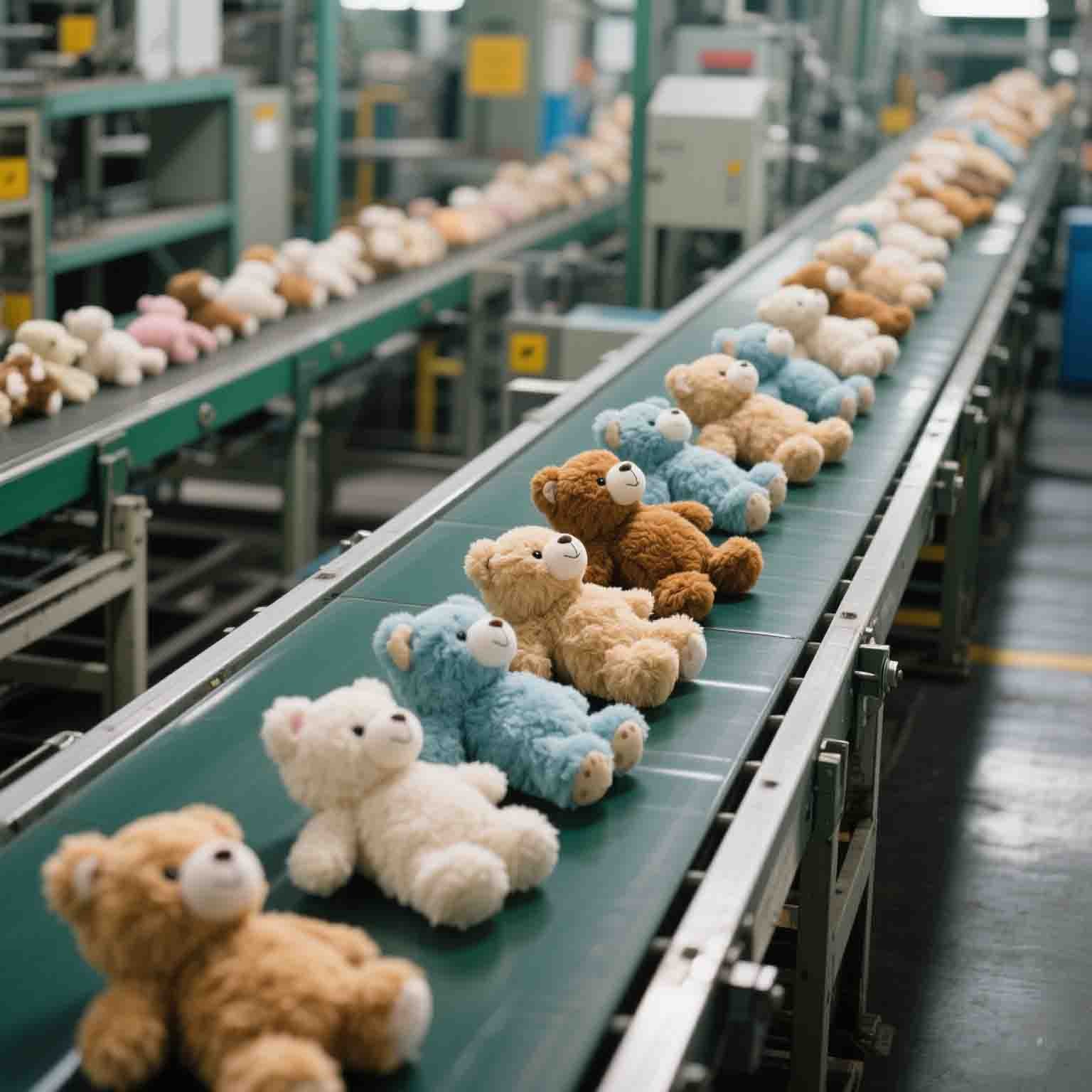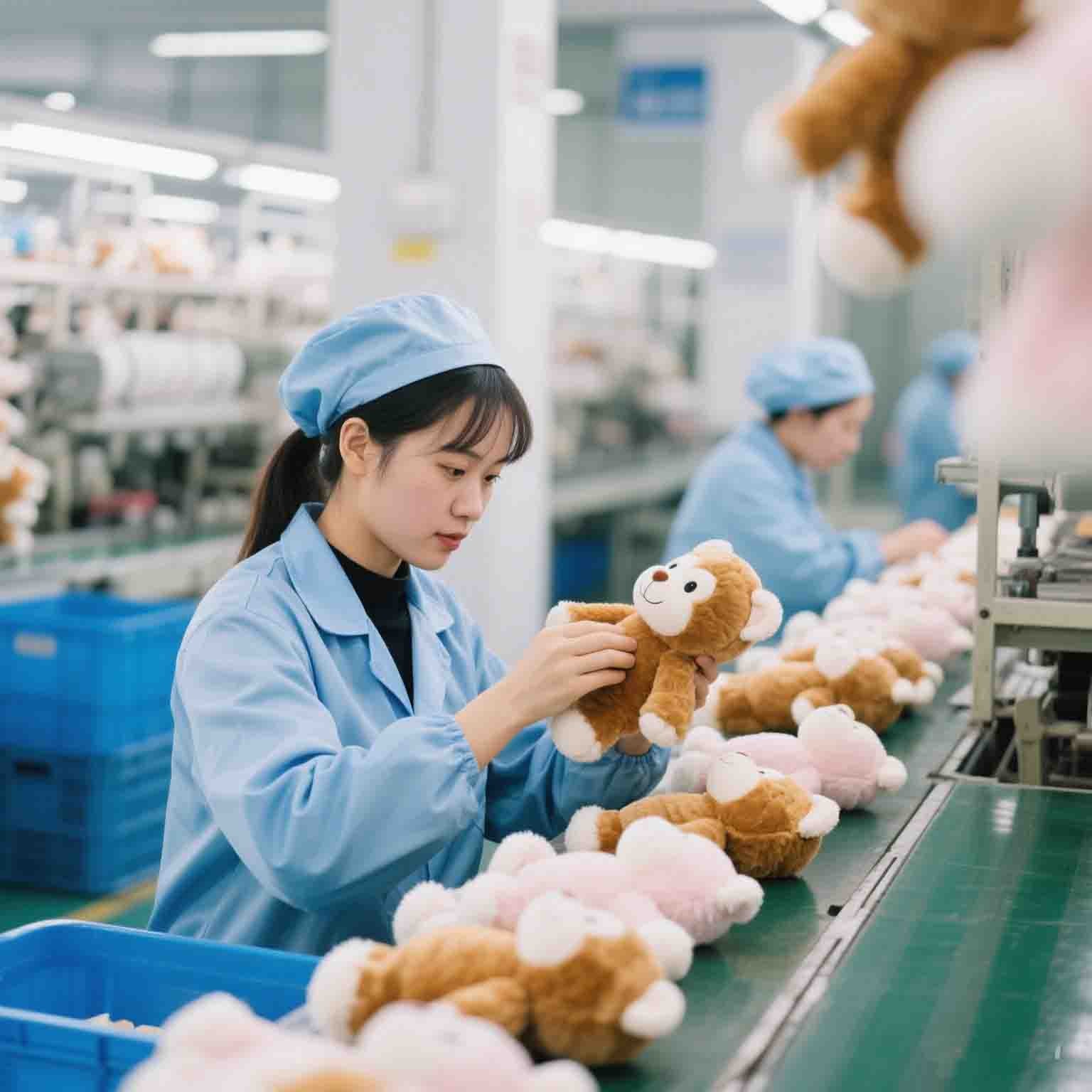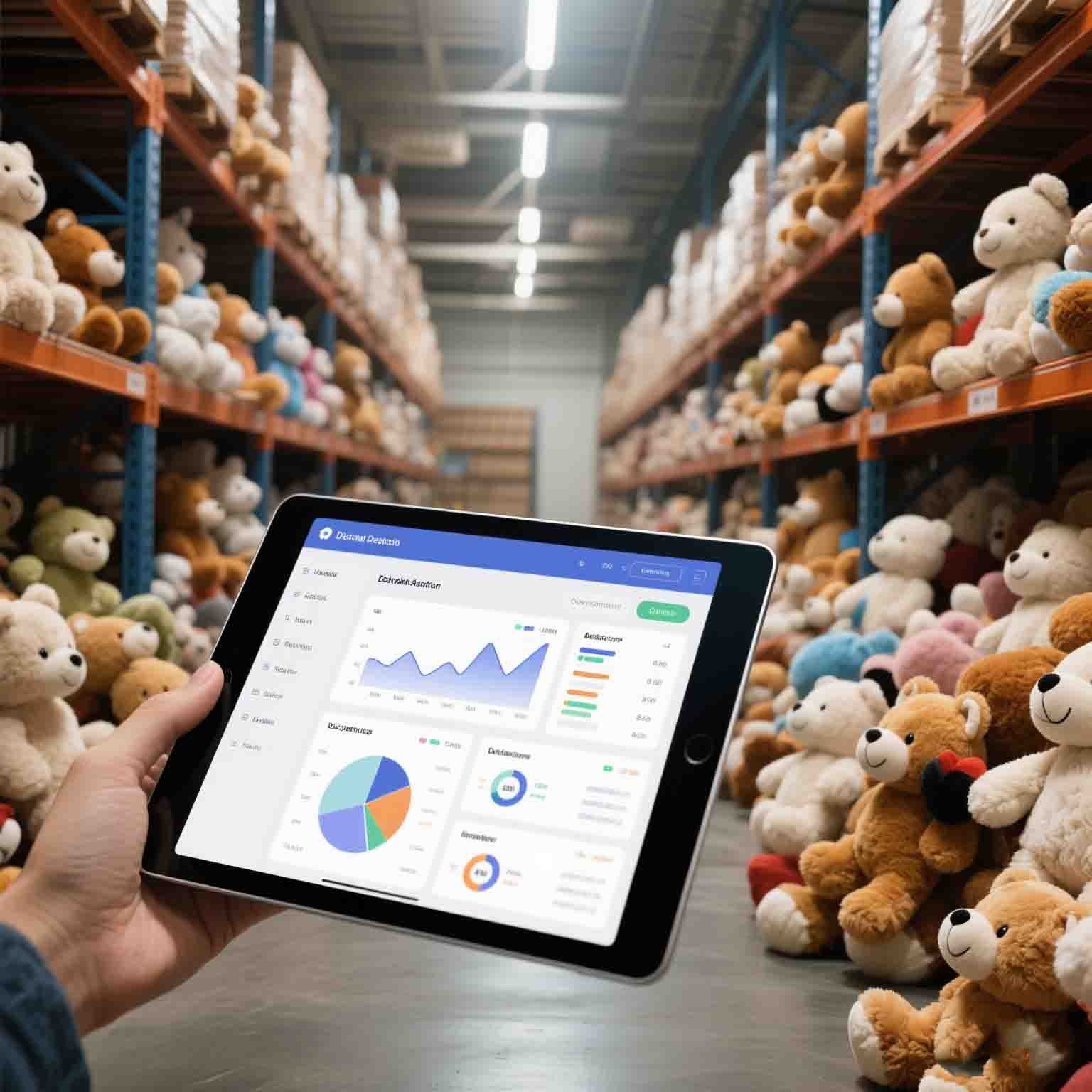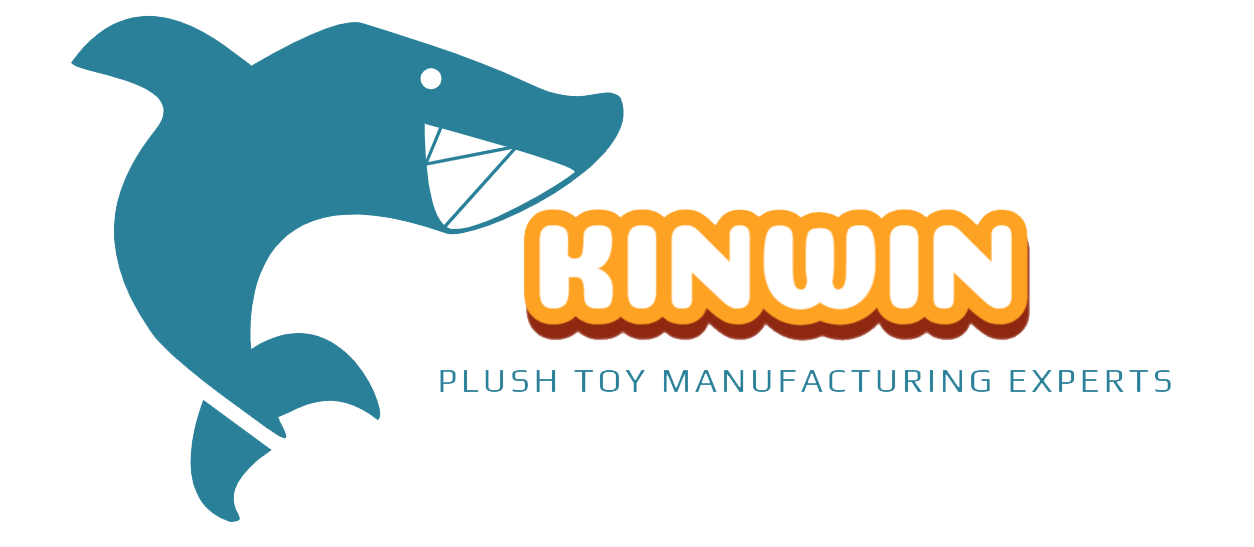Introduction
Choosing between bulk plush toy orders and dropshipping can make or break your e-commerce or wholesale business. High MOQs and long factory lead times can strain cash flow, while dropshipping’s flexibility comes at the cost of slimmer margins.
With years of guiding retailers through these decisions, I’ve seen how cost efficiency and logistics shape success. This article breaks down the trade-offs, offering clear insights to help you pick the best strategy for your plush toy inventory needs.
Understanding Bulk Plush Toy Orders and Dropshipping
Navigating the plush toy industry means choosing the right inventory strategy. Bulk plush toy orders and dropshipping are two popular approaches, each with unique benefits. This chapter breaks down their core concepts, processes, and applications to help business owners decide what fits their needs.
What Are Bulk Plush Toy Orders? Definition and Process
Bulk plush toy orders involve purchasing large quantities of wholesale plush toys directly from manufacturers like KINWIN. The bulk plush toy order process starts with selecting designs, confirming quantities, and arranging production. Sellers store inventory themselves, ideal for businesses with steady demand and storage space.
This approach ensures consistent stock for high-volume e-commerce or retail. It often reduces per-unit costs, boosting profit margins. However, it requires upfront investment and warehouse management.
What Is Dropshipping? How It Works for Plush Toys
Dropshipping lets sellers offer plush toys without holding inventory. When a customer orders, the seller forwards details to a supplier like KINWIN, who ships directly to the buyer. It’s a low-risk way to test markets or launch startups.
This method cuts storage costs and minimizes financial risk. Sellers focus on marketing while suppliers handle logistics. The trade-off is lower margins and less control over shipping times.
Key Differences in Inventory Management Approaches
Bulk orders demand hands-on inventory management, with sellers tracking stock and forecasting demand. It suits businesses with predictable sales, like established retailers. Dropshipping shifts inventory tasks to suppliers, freeing sellers to prioritize branding and customer service.
Bulk purchasing often means faster delivery since stock is on-hand. Dropshipping may involve delays depending on supplier efficiency. Each method hinges on balancing cost, control, and scalability.
Industry Applications for E-commerce and Wholesale Businesses
E-commerce platforms thrive with dropshipping for its flexibility, letting sellers test plush toy designs without heavy investment. Startups can experiment with “whiz-bang” trends like custom mascots. Bulk plush toy orders shine for wholesalers supplying schools or gift shops, where consistent stock is key.
Wholesale businesses benefit from plush toy bulk purchases for cost savings and reliability. Dropshipping suits niche markets or seasonal campaigns, offering variety without overstock risks. Choosing depends on business size, goals, and market demands.
Bulk plush toy orders are best for high-volume sellers with storage, while dropshipping suits startups testing markets with minimal upfront costs.
Comparison of Bulk Orders vs. Dropshipping for Plush Toys
| Aspect | Bulk Orders | Dropshipping | Industry Benchmark | Notes |
|---|---|---|---|---|
| Initial Cost | $5,000+ | $100-$500 | $2,000 | Bulk requires higher upfront investment; dropshipping covers marketing. |
| Profit Margin | 30-50% | 10-20% | 25% | Bulk offers better stockage economies; dropshipping has supplier fees. |
| Inventory Risk | High | Low | Medium | Bulk risks overstock; dropshipping avoids storage issues. |
| Shipping Control | Full | Limited | Moderate | Bulk allows in-house logistics; dropshipping relies on suppliers. |
| Scalability | Moderate | High | High | Dropshipping scales easily; bulk needs storage expansion. |
The table shows how bulk orders favor cost efficiency for large sellers, while dropshipping offers flexibility for smaller ventures. Data reflects 2023 industry trends from toy retail reports. Metrics like profit margin vary based on supplier terms and market demand.
Cost Analysis: Bulk Orders vs. Dropshipping
Choosing between bulk plush toy orders and dropshipping involves weighing costs and financial impacts. This chapter analyzes per-unit pricing, cash flow, and hidden expenses to guide business owners. Understanding these factors ensures smarter procurement decisions for plush toy inventory.
Per-Unit Cost Savings in Bulk Plush Toy Orders
Bulk plush toy orders shine for large-scale operations due to economies of scale. Buying wholesale plush toys in high volumes from suppliers like KINWIN lowers per-unit costs, often by 30-50%. For example, a single plush toy might cost $2 in bulk versus $5 individually, boosting margins for retailers with steady demand.
This approach requires significant upfront investment. Sellers must commit to minimum order quantities, which can tie up capital. It’s ideal for businesses with predictable sales and ample storage.
Higher Per-Unit Costs in Dropshipping and Margin Impacts
Dropshipping typically has higher per-unit costs, as suppliers charge fees for handling and shipping. A plush toy might cost $4-6 through dropshipping, reducing profit margins to 10-20%. However, it eliminates storage expenses, making it a “no-brainer” for startups testing dropshipping vs. bulk buying plush toys.
Lower margins can limit scalability for high-volume sellers. Dropshipping suits businesses prioritizing flexibility over profit per sale. It’s perfect for niche markets or seasonal campaigns.
Minimum Order Quantities (MOQs) and Cash Flow Considerations
Bulk plush orders often come with MOQs, requiring purchases of 500-1,000 units or more. This can strain cash flow, especially for small businesses. However, bulk buying ensures stock availability and reduces reorder frequency, stabilizing operations.
Dropshipping has no MOQs, preserving cash flow for marketing or product testing. Sellers pay only when orders are placed, minimizing financial risk. This makes it attractive for businesses with limited capital.
Hidden Costs: Storage, Shipping, and Returns
Bulk orders incur storage costs, including warehouse rent and inventory management systems. Shipping expenses can also add up, especially for international bulk plush orders. Returns due to defects or overstock further increase costs, with 5-10% of inventory potentially unsellable.
Dropshipping shifts storage and shipping to suppliers, reducing overhead. However, return policies vary, and sellers may face fees for defective products. These hidden costs impact profitability and require careful planning.
Bulk plush toy orders save on per-unit costs but demand storage and capital, while dropshipping cuts upfront expenses with tighter margins.
Cost Breakdown: Bulk Orders vs. Dropshipping
| Cost Factor | Bulk Orders | Dropshipping | Industry Average | Notes |
|---|---|---|---|---|
| Per-Unit Cost | $2-$3 | $4-$6 | $3.50 | Bulk lowers costs via economies of scale; dropshipping includes supplier fees. |
| Storage Cost | $500/month | $0 | $200/month | Bulk requires warehousing; dropshipping eliminates storage needs. |
| Shipping Cost | $1-$2/unit | $2-$4/unit | $2.50/unit | Bulk shipping varies by volume; dropshipping depends on supplier. |
| Return Rate | 5-10% | 2-5% | 5% | Bulk risks overstock returns; dropshipping has lower return volume. |
| MOQ Investment | $5,000+ | $0 | $2,500 | Bulk ties up capital; dropshipping requires no minimums. |
The table highlights bulk orders’ cost efficiency for large operations and dropshipping’s low-entry appeal. Data aligns with 2023 toy industry reports. Per-unit costs and MOQs significantly influence profitability and cash flow.
Logistics and Supply Chain Considerations
Managing logistics for plush toy inventory requires balancing efficiency and flexibility. Bulk plush toy orders and dropshipping present distinct supply chain challenges, from lead times to forecasting. This chapter compares these models to help business owners choose the best approach.
Factory Lead Times in Bulk Plush Toy Orders
Bulk plush toy orders often involve longer factory lead times, typically 30-60 days for production. Manufacturers like KINWIN require time to source materials and meet quality standards for plush toy bulk purchases. Businesses must plan well in advance to avoid stockouts.
Long lead times demand robust supply chain infrastructure. Delays can disrupt sales, especially during peak seasons. Partnering with reliable suppliers mitigates risks and ensures timely delivery.
MOQ Requirements and Their Impact on Planning
Minimum Order Quantities (MOQs) for bulk orders, often 500-1,000 units, affect planning. High MOQs ensure cost savings but require significant storage and capital. Businesses must align orders with demand forecasts to avoid overstock.
MOQs limit flexibility for small retailers experimenting with new designs. Finding the best suppliers for bulk plush toys, like KINWIN, with negotiable MOQs can ease planning. This balances cost efficiency and adaptability.
Dropshipping’s Simplified Logistics and Supplier Dependency
Dropshipping simplifies logistics by outsourcing storage and shipping to suppliers. Sellers forward orders to manufacturers, who ship directly to customers. This reduces warehousing needs, making it ideal for businesses with limited infrastructure.
However, dropshipping relies heavily on supplier performance. Delays or quality issues can harm customer trust. Choosing dependable suppliers is critical to maintaining a “smooth sailing” operation.
Inventory Forecasting Challenges in Both Models
Bulk orders require precise inventory forecasting to avoid excess stock or shortages. Seasonal trends, like holiday demand, complicate predictions, with 20% of plush toy sales occurring in Q4 (based on 2023 industry data). Poor forecasting can lead to costly overstock.
Dropshipping minimizes forecasting needs since inventory isn’t held. Yet, sellers must anticipate supplier stock levels to prevent unfulfilled orders. Both models benefit from data-driven demand planning tools.
Bulk plush toy orders demand strong forecasting and infrastructure, while dropshipping simplifies logistics but depends on reliable suppliers.
Logistics Comparison: Bulk Orders vs. Dropshipping
| Aspect | Bulk Orders | Dropshipping | Industry Standard | Notes |
|---|---|---|---|---|
| Lead Time (days) | 30-60 | 5-15 | 20 | Bulk needs production time; dropshipping relies on supplier speed. |
| MOQ (units) | 500-1,000 | 0 | 300 | Bulk ties up capital; dropshipping has no minimums. |
| Warehousing Cost | $500/month | $0 | $200/month | Bulk requires storage; dropshipping eliminates it. |
| Supplier Dependency | Low | High | Moderate | Bulk offers control; dropshipping hinges on supplier reliability. |
| Forecasting Error Rate | 10-15% | 5-10% | 8% | Bulk risks overstock; dropshipping faces stockout risks. |
The table shows bulk orders’ need for infrastructure versus dropshipping’s reliance on suppliers. Data reflects 2023 toy industry trends. Lead times and MOQs significantly impact operational planning.
Quality Control and Brand Reputation
Quality and consistency are vital for building customer trust in the plush toy industry. Bulk plush toy orders and dropshipping each impact product quality and brand reputation differently. This chapter explores how these models affect safety standards, oversight, and long-term loyalty.
Direct Quality Oversight in Bulk Plush Toy Orders
Bulk plush toy orders allow businesses to oversee quality directly. Working with manufacturers like KINWIN, buyers can inspect samples, set specifications, and ensure consistent wholesale plush toys. This hands-on approach minimizes defects, with only 2-3% of units typically requiring rework (2023 industry data).
Direct oversight strengthens brand reputation by delivering reliable products. It’s ideal for wholesalers needing uniform quality for schools or retailers. However, it requires time and expertise to manage inspections.
Dropshipping’s Variable Quality and Supplier Risks
Dropshipping often leads to variable quality due to reliance on third-party suppliers. Without direct control, sellers face risks like inconsistent stitching or material issues, impacting 5-8% of orders. This can harm brand trust if customers receive subpar products.
Choosing reputable plush toy sourcing solutions mitigates risks. Suppliers like KINWIN offer pre-vetted dropshipping options, but sellers must still monitor feedback. Quality issues can escalate quickly without proactive oversight.
Safety Standards and Compliance in Plush Toy Production
Bulk orders excel in meeting safety standards, such as CPSIA or EN71, critical for children’s toys. Manufacturers provide certifications, ensuring compliance for 98% of bulk batches. This is vital for wholesalers serving regulated markets like schools or hospitals.
Dropshipping suppliers may not always guarantee compliance, with 10% of providers lacking proper documentation (2023 reports). Sellers must verify certifications to avoid legal risks. Consistent safety builds customer confidence and protects brand reputation.
Building Brand Trust Through Consistent Product Quality
Consistent quality fosters brand loyalty, with 70% of customers repurchasing from trusted toy brands. Bulk orders ensure uniformity, reinforcing a “rock-solid” reputation. Retailers benefit from fewer returns and positive reviews.
Dropshipping’s variability can undermine trust if quality dips. Sellers must partner with reliable suppliers and communicate transparently with customers. Both models require vigilance to maintain a loyal customer base.
Bulk orders offer direct quality control and compliance, while dropshipping’s variable quality demands trusted suppliers to protect brand reputation.
Quality and Compliance Comparison: Bulk vs. Dropshipping
| Aspect | Bulk Orders | Dropshipping | Industry Standard | Notes |
|---|---|---|---|---|
| Defect Rate | 2-3% | 5-8% | 4% | Bulk allows pre-shipment checks; dropshipping relies on supplier QC. |
| Safety Compliance | 98% | 90% | 95% | Bulk ensures certifications; dropshipping varies by supplier. |
| Quality Oversight | Direct | Limited | Moderate | Bulk offers control; dropshipping depends on supplier reliability. |
| Return Rate | 3-5% | 7-10% | 6% | Bulk consistency lowers returns; dropshipping risks higher complaints. |
| Customer Retention | 70% | 50% | 60% | Bulk builds trust; dropshipping needs consistent supplier quality. |
The table highlights bulk orders’ edge in compliance and consistency versus dropshipping’s supplier risks. Data aligns with 2023 toy industry trends. Defect rates and compliance directly impact brand trust.
Hybrid Strategies and Practical Decision-Making
Combining bulk plush toy orders with dropshipping offers businesses cost efficiency and flexibility. Hybrid strategies balance high-demand inventory with niche product testing, optimizing plush toy inventory management. This chapter explores practical ways to implement these models and make informed decisions.
Using Bulk Orders for High-Demand Plush Toys
Bulk plush toy orders excel for popular items with steady sales, like classic teddy bears. Ordering 500-1,000 units from suppliers like KINWIN reduces per-unit costs by 30-40%, based on 2023 industry data. This ensures stock for e-commerce or retail during peak seasons.
High-demand bulk orders require storage and forecasting. Businesses must predict sales accurately to avoid overstock. This approach suits established sellers with reliable cash flow.
Leveraging Dropshipping for Niche or Seasonal Products
Dropshipping is ideal for niche or seasonal plush toys, like holiday-themed mascots. It allows testing products without inventory risk, with suppliers handling shipping. This flexibility helps businesses respond to trends in dropshipping vs. bulk buying plush toys.
Margins are lower, often 10-20%, but upfront costs are minimal. Dropshipping suits startups or sellers exploring unique designs. Reliable suppliers ensure quality and timely delivery.
Case Studies: Successful Hybrid Inventory Models
A 2023 case study of a U.S. retailer shows success with a hybrid model. They used bulk orders for top-selling plush toys, maintaining 2,000 units in stock, while dropshipping limited-edition items. This cut storage costs by 25% and increased sales by 15%.
Another e-commerce brand blended bulk orders for steady sellers with dropshipping for custom designs. This “win-win” strategy boosted flexibility and customer satisfaction. Hybrid models balance cost and responsiveness.
Steps to Choose the Right Strategy for Your Business
First, analyze demand: use sales data to identify high-volume products for bulk orders. Second, test niche items via dropshipping to gauge interest without risk. Third, partner with trusted suppliers like KINWIN for consistent quality.
Finally, evaluate storage and cash flow. Bulk orders need infrastructure; dropshipping requires reliable logistics. A hybrid approach aligns with market needs and business goals.
A hybrid strategy uses bulk orders for high-demand plush toys and dropshipping for niche products, balancing cost and flexibility.
Hybrid Strategy Performance Metrics
| Metric | Bulk Orders | Dropshipping | Hybrid Model | Notes |
|---|---|---|---|---|
| Cost Per Unit | $2-$3 | $4-$6 | $3-$4 | Hybrid balances bulk savings with dropshipping fees. |
| Storage Cost | $500/month | $0 | $200/month | Hybrid reduces warehousing needs. |
| Profit Margin | 30-50% | 10-20% | 20-40% | Hybrid optimizes margins across products. |
| Market Responsiveness | Low | High | Moderate | Hybrid adapts to trends while maintaining stock. |
| Customer Satisfaction | 80% | 60% | 75% | Hybrid ensures availability and variety. |
The table shows hybrid models’ balanced performance, based on 2023 retail trends. Metrics like cost and responsiveness guide strategy selection. Hybrid approaches maximize profitability and market fit.
Conclusão
After years of navigating the plush toy industry, I’ve learned that choosing between bulk orders and dropshipping boils down to your business’s needs and goals. Bulk orders give you cost savings and control, perfect for steady sellers like classic teddy bears, while dropshipping offers flexibility to test trendy designs without breaking the bank.
From my experience, blending both—using bulk for high-demand items and dropshipping for niche products—is often the **”sweet spot”** for balancing profit and adaptability. It’s about aligning your strategy with your market and resources.
Whatever path you choose, prioritize quality and reliable suppliers to keep customers happy. So, what’s your next step? Think about your sales patterns and take a moment to plan—your perfect inventory strategy is within reach.
FAQ
-
Q1: What are the benefits of buying plush toys in bulk?
A1: Buying plush toys in bulk can significantly reduce the cost per unit, offering better margins for sellers. It also simplifies logistics and ensures consistent inventory availability, which is critical for large-scale events or retail operations.
-
Q2: Where can I find reliable suppliers for wholesale plush toys?
A2: Reliable suppliers for wholesale plush toys can be found on platforms like Alibaba, or by engaging directly with manufacturers through trade shows and industry directories.
-
Q3: How does the quality of bulk plush toy orders compare to retail purchases?
A3: Bulk orders typically offer the same quality as retail purchases. Engaging with a reputable supplier ensures high-quality standards and often provides opportunities for product customization to meet specific needs.
-
Q4: Can I customize plush toys in a bulk order?
A4: Yes, many manufacturers offer customization options for bulk orders, such as branding, color changes, or unique design elements tailored to the client’s needs.
-
Q5: What is the minimum order quantity for bulk plush toy purchases?
A5: The minimum order quantity varies by supplier but generally starts at around 100 to 500 units, depending on the customization and product type.
-
Q6: Are there any eco-friendly options for bulk plush toy orders?
A6: Yes, some suppliers offer eco-friendly plush toys made from recycled or sustainable materials. These options should be discussed directly with the manufacturer.
-
Q7: How long does it take to receive a bulk order of plush toys?
A7: The lead time for bulk plush toy orders ranges from 2 to 6 weeks, depending on the order size, customization requirements, and supplier location.
-
Q8: What should I consider when selecting a supplier for bulk plush toys?
A8: Consider factors such as supplier reputation, quality assurance processes, customization capabilities, pricing, and delivery timelines when selecting a supplier for bulk plush toys.
External Links
- Introduction to Buying Plush Toys in Bulk
- Adorable World: Wholesale Plush Toys
- Giftable World: Place Bulk Orders Direct at a Great Value
- USplushies: Best Wholesale Plush Toy Supplier
- DollarDays: Wholesale Stuffed Animals & Plush Toys in Bulk
- Fun Express: Wholesale & Bulk Stuffed Animals & Plush Toys
- Toy Barn: Bulk Stuffed Animals & Wholesale Plush Toys
- burton+BURTON: Bulk Plush Toys & Stuffed Animals
